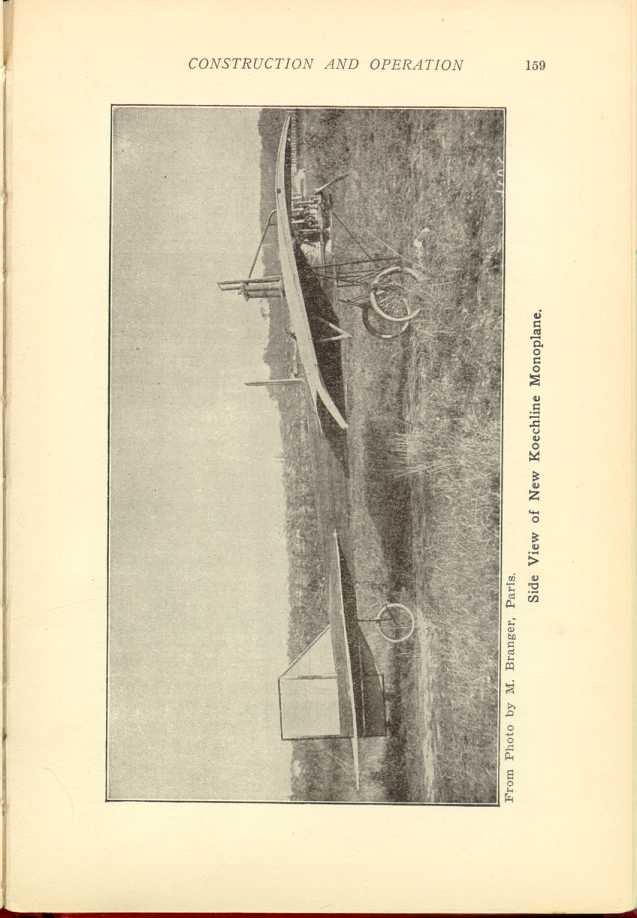Still Another New Aeroplane.
Another new aeroplane is that produced by A. M.
159

From Photo by M. Branger, Paris.
Side View of New Koechline Monoplane.
[Description: Black and white photograph: monoplane from side.]
160
The system of rudder and elevation control is very simple. The aviator sits in front of the lower plane, and extending his arms, grasps two supports which extend down diagonally in front. On the under side of these supports just beneath his fingers are the controls which operate the vertical rudder, in the rear. Thus, if he wishes to turn to the right, he presses the control under the fingers of his right hand; if to the left, that under the fingers of his left hand. The elevating rudder is operated by the aviator's right foot, the control being placed on a foot-rest.